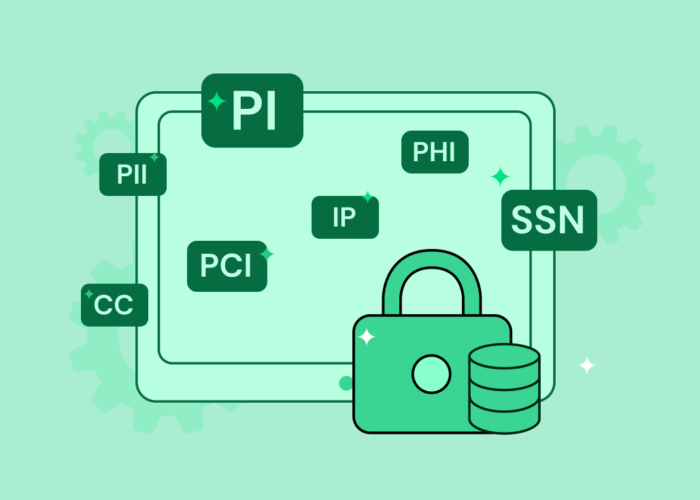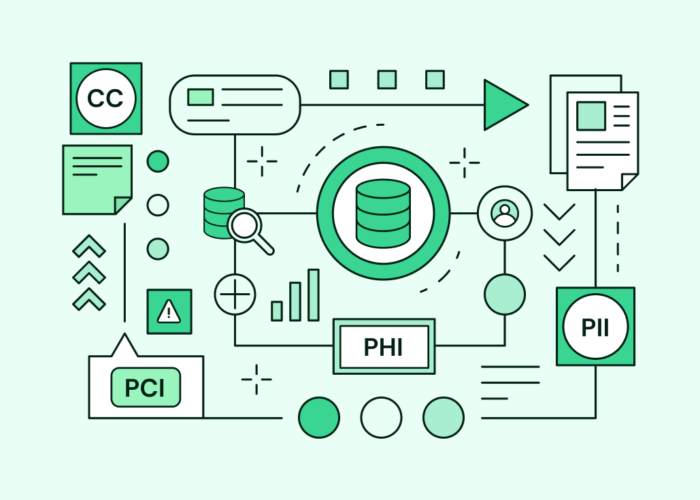Unstructured Data Classification with LLMs: A Leap Forward in Data Security


Unstructured data, though crucial and copious, is much more difficult to classify than structured data. But if left unclassified, sensitive information within this unstructured data may fly under the radar, increasing the likelihood of data leakage and other security risks. However, current methods of data classification fall short. Enter LLMs – a far more efficient way of classifying unstructured data, representing a real security breakthrough.
Growing at a rate three times faster than structured data, unstructured data (e.g., free text and native file constructs) makes up around 80-90% of all new enterprise data. Containing both sensitive and non-sensitive information, this data, by definition, exists in a raw format, unconfined to the predefined tabular model of structured data.
When any amount of unstructured data is left unclassified, the sensitive portion is left to scatter insecurely in Cloud or on-prem environments with zero visibility, which could lead to serious risks for enterprises.
Conventional data classification methods, however, leave much to be desired when it comes to classifying unstructured data. Nevertheless, enterprises cannot afford to leave unstructured data unclassified, lest they face potentially punishing consequences.
Hard to Classify, Hard to Ignore
Data identification, classification, and management – especially when it comes to unstructured data – is a huge challenge for enterprises.
Given that unstructured data is not organized in any preordained fashion, it is more difficult to process, analyze, and ultimately classify using traditional methods. After all, the unstructured data hidden within email attachments, source code, and raw textual files, for example, lack the neat rows-and-columns field formatting baked into structured data. Classifying unstructured data, therefore, can be extremely difficult and time-consuming and is often handled manually, leading to mistakes and oversight.
Enterprises are now in possession of petabytes-worth of this unstructured data, making classification that much more difficult. In fact, many enterprises don’t quite know how much unstructured data they even have, how fast it may be multiplying, nor how much of it is sensitive.
But that doesn’t mean classification can be disregarded. The longer it takes for an organization to pinpoint and adequately classify its sensitive unstructured data – whether it be PII, PCI, PHI, or trade secrets – the more likely privacy and cybersecurity risks are to manifest.
The Shortfalls of NER
Although Named Entity Recognition (NER) has often been the “go-to” tool for classifying unstructured data, its drawbacks may outweigh its benefits.
For one, NER algorithms are limited in their capacity to determine context and to deduce entity types accurately, giving rise to misclassifications. This is because unstructured data tends to contain ambiguous text, typos or grammatical errors, as well as entities not covered by training data. In addition, NER models trained in one language often perform poorly on texts in other languages, and building multilingual NER systems may not always be a cost-effective option.
Additionally, each NER algorithm is domain-specific and is only able to recognize a small set of data types. Adapting or fine-tuning models to fit other domains, however, is easier said than done, as it is usually resource intensive and does not always guarantee desired outcomes. Given the substantial volumes of unstructured data that enterprises possess, computing time and resource demands create notable bottlenecks, hindering the scalability of such data processing.
Why LLMs Excel at Classifying Unstructured Data
Known for their superior natural language processing functionality, LLM algorithms stand to revolutionize data classification and, in turn, strengthen data security such that it keeps up with the projected staggering growth of unstructured data.
Trained on vast and diverse datasets, LLMs are able to understand the semantics behind words, making them uniquely capable of deciphering the meaning, context, and tone of unstructured text and other data that conventional NER models typically miss. And due to the sheer amounts of data they can analyze and retain, their accuracy extends far beyond that of NER – let alone human personnel.
As a result, LLM classification engines can recognize an abundant range of distinct data types – from casual documents to complex source code, audio files, images, and videos – including out-of-the-box classifications that align with GDPR, HIPAA, CCPA, and PCI-DSS data privacy compliance standards. By grasping the context and nuances of unstructured data, LLMs are not only able to classify it with singular specificity and precision, but they are able to do so in significantly less time than manual classification methods.
They can even be used to identify and flag sensitive data present within programming languages, proprietary code, as well as user-generated content entered into collaboration platforms such as Trello, Teams, Slack, Asana, and Google’s suite of shared workspace apps, among others. In time, this will become more and more relevant as user-generated content continues to proliferate.
What’s more, LLM-driven data classification is extremely secure, as it can be deployed within an enterprise’s own environment, assuring that any sensitive data will remain entirely on-premise.
Level Up
In an age in which companies generate data at unprecedented rates – primarily unstructured, much of which may be sensitive – classifying data automatically has never been more critical.
While data classification is just one aspect of IT security, its significance is escalating in light of growing amounts of sensitive data and evolving cyber threats.
Fortunately, LLMs can take data classification and your company to a whole new level.


